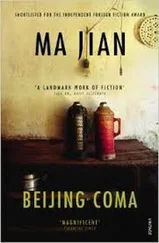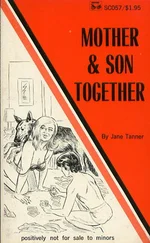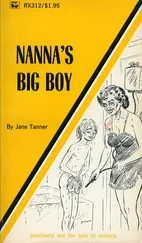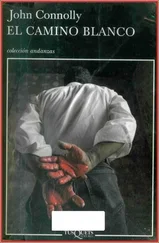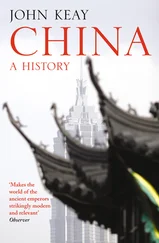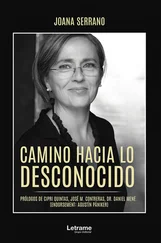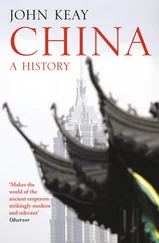Neither as a writer nor as a lecturer did Toomer earn an income substantial enough to support himself. Like his father Nathan Toomer, he was fortunate that he married well. In 1931, Toomer married the writer Margery Latimer, who died in 1932 after giving birth to their daughter, Margery Toomer. Two years later, Toomer married Marjorie Content, the daughter of a wealthy stockbroker, and the former wife of Harold Loeb, the founder of the magazine Broom. Marjorie Content and Toomer came close to meeting one another in 1923 at her East Ninth Street townhouse, in the basement of which were the offices of Broom. Lola Ridge attempted to introduce Content to Toomer, whose work she admired, but she shyly demurred. Toomer married her in Taos, New Mexico, on September 1, 1934, with his former lover Georgia O’Keefe in attendance as witness. He would be her fourth and last husband.
Prior to his marriage to Content, however, Toomer had developed a reputation as the inamorato of two of the women who played central roles in the cultural world of American modernism. Its center of gravity shifted between Seven Arts, presided over to a very large degree by Waldo Frank, and the Photo-Secession Group, perhaps an even more exalted stratum of the arts, whose headquarters was Manhattan’s 291 Gallery, of which the photographer Alfred Stieglitz was the imperious head. Shortly after the publication of Cane in the fall of 1923, Toomer had an affair with Margaret Naumburg, an educator who also happened to be Waldo Frank’s wife, which not surprisingly led to the dissolution of their friendship. 152Sometime later in 1933, Toomer also had an affair with the artist Georgia O’Keefe during one of his visits to The Hill, Stieglitz and O’Keefe’s retreat on Lake George, New York. 153Toomer was extraordinarily handsome and beguiling, and no doubt cut a striking figure, often finding himself one of the very few swarthy men in the inner sanctums of white American modernism.
As a result of his marriage to Marjorie Content, Toomer could continue with his work as a Gurdjief lecturer without fear of impoverishment. He would lecture on the Gurdjief method most intensely for the next two decades, not only in New York but in Chicago; Portage, Wisconsin; Taos, New Mexico; and Doylestown, Pennsylvania, his final home. Toomer continued to write novels, short stories, plays, aphorisms, and poems, but most of these bear the unmistakable imprint of Gurdjief’s philosophy and teachings, stimuli not nearly as fecund as the rural Georgian landscape. Except for autobiographical excerpts edited by Darwin T. Turner, including the poem “The Blue Meridian,” and Essentials , edited by Rudolph P. Byrd, a collection of aphorisms, Toomer’s post- Cane writings remain largely unpublished. Lacking Cane ’s lyrical originality, Toomer’s philosophical and psychological writings often read like sophomoric, prosaic, bloodless translations of Gurdjief’s philosophy and method.
As Toomer passed into Gurdjief’s world, he passed into literary obscurity. While his search for enlightenment or the “intelligible scheme” took him to India, through Jungian analysis, and to his conversion to the Society of Friends, Toomer’s commitment to Gurdjief, while fluctuating in its intensity, nevertheless remained the organizing principle of his life. He recommitted himself to this work in 1953, and remained a disciple until he passed away on March 30, 1967—the year in which the third edition of Cane was published.
Jean Toomer’s Racial Self-Identifcation:
A Note on the Newly Found Documents
Of course, we are still confronted with the vital question that has arisen in various ways throughout this introduction: Was Jean Toomer a Negro who passed for white?
Thanks to pioneering research conducted at the editors’ request by the genealogist Megan Smolenyak Smolenyak, we can now understand more fully than ever before Jean Toomer’s conflicted thinking about his racial identification, as he expressed them in public documents, including the federal census, two draft registrations, and on his marriage license to Margery Latimer. In addition, we also now know how Toomer’s grandfather and grandmother, Pinckney Benton Stewart Pinchback and Nina Emily Hethorn, his mother, Nina Pinchback, and his father, Nathan Toomer, are all identified in federal census records.
In every census taken between 1850 and 1920, P. B. S. Pinchback and Nina Emily Hethorn are identified either as black or as mulattos. Between 1870 and her death in 1909, Nina Pinchback is identified as a mulatto or black. Likewise, Nathan Toomer is identified between 1870 and 1900 as either mulatto or black. (Nathan’s previous wife, Amanda America Dixon, is also identifed as a mulatto in the 1870 and 1880 censuses and as black on her marriage license with Nathan. Amanda’s mother, Julia Frances Lewis Dixon, is also identified in the censuses taken between 1870 and 1910 as a mulatto or black.) In other words, Jean Toomer’s mother, father, grandfather, and grandmother all self-identified as Negroes.
In the 1900 federal census, Eugene Toomer is listed as black. In the 1910 federal census he is listed as mulatto. In June 1917, Eugene Pinchback Toomer registered for the draft in Washington, D.C. He is recorded to be an unemployed student, single, as having an unspecified disability, and as being a “Negro.” According to Kernan and Eldridge, the “unspecified disability” was actually “bad eyes and a hernia gotten in a basketball game.” 154
The 1920 United States Federal Census shows Toomer boarding with other lodgers in the home of an Italian couple on East Ninth Street in Manhattan. He is assigned New York as a birthplace, suggesting that someone else responded on his behalf, in his absence. His race is listed as “white.”
In the 1930 United States Federal Census, Toomer is listed as a resident, with many others, at 11 Fifth Avenue, in Manhattan. Because of the accuracy of the other data contained in this document — including his birthplace, his parents’ states of birth, and his occupation as a freelance writer — it is likely that he furnished these details himself. His race is listed as white.
A year later Toomer married “Marjery” or Margery Latimer on October 30, 1931, in Portage, Wisconsin. Both the bride and the groom are identified as “white” on the marriage license. According to Kerman and Eldridge, Margery Latimer was aware of what she terms “the racial thing,” that is, that Toomer was black. 155Though this is true and though she shared Toomer’s vision of a new race in America, she was nevertheless unprepared for headlines such as this one published in the national press regarding her marriage to Toomer: “Negro Who Wed White Writer Sees New Race.” 156While Toomer proclaimed that his marriage to Margery Latimer was evidence of a “new race in America…, neither white nor black nor in-between,” and that their marriage was simply one between “two Americans,” the white press chose to focus upon only the most sensational aspects of their nuptials. 157
In 1942, Toomer registered once again for the draft, as part of the World War II Draft Registration. He identified himself as Nathan Jean Toomer, and he was living with his second wife, Marjorie C. Toomer, in Doylestown, Pennsylvania. He is described as 5’10” tall, weighing 178 pounds, with black hair and eyes, and a “dark brown complexion.” He identified himself as a “Negro.”
These documents reveal that Jean Toomer self-identified as Negro in 1917, when he first registered for the draft. Then either he or a roommate decided to identify him as “white” in the federal census of 1920. Similarly, Toomer self-identified as “white” in the 1930 census and a year later on his marriage license with Margery Latimer. He then self-identified again as a Negro in 1942 on his second draft registration. Given the fact that draft boards at the time were local, Toomer’s decision to identify himself as a black man is quite surprising. Since the draft board would have been unaware of Toomer’s previous identification of himself as a Negro in 1917, we are left wondering why he did this after he had decided to pass as a white man.
Читать дальше




